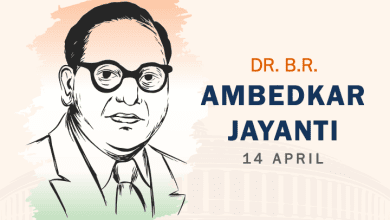What is the significance of Holi? What is the true tale, history, and importance?
Each of us looks forward to Holi because of the fervour and vibrancy it brings. Holi is a festival that takes place on the full moon day in the month of Phalguna (Feb-Mar). This holiday commemorates the triumph of good over evil. We all go shopping for gulals and sweets to commemorate this event. But, in the midst of it all, do we know anything about the legend behind it? So, through this essay, we will transport you to a time when a king named Hiranyakashipu ruled. Here’s a sneak peek.
Hiranyakashipu was a demon-like monarch from ancient India. He wanted vengeance for his younger brother’s death at the hands of Lord Vishnu. As a result, the king prayed for years in order to achieve authority. Finally, he received a boon. Hiranyakashipu, on the other hand, began to regard himself as God and demanded his followers to worship him as such. Prahalad, the cruel king’s young son, was a devout follower of Lord Vishnu. Prahalad had always disobeyed his father’s command and continued to worship Lord Vishnu.
The King was so cold-hearted that he chose to murder his own son for refusing to worship him. He asked his fire-imbued sister, ‘Holika,’ to sit on a pyre of fire with Prahalad in her lap. Prahalad was gonna be set ablaze. However, their scheme backfired when Prahalad, who was reciting Lord Vishnu’s name throughout, was spared, while Holika was burned to ashes. The defeat of Holika means the incineration of all evil. Hiranyakashipu was then murdered by Lord Vishnu. Holi, on the other hand, is associated with Holika’s death. As a result, in some Indian states, such as Bihar, a pyre in the form of a bonfire is ignited on the ground.
But how did colours come to be associated with Holi? This can be traced back to the time of Lord Krishna (reincarnation of Lord Vishnu). Lord Krishna is said to have celebrated Holi with colours and therefore popularised the festival. At Vrindavan and Gokul, he liked to play holi with his pals. They used to pull pranks on people all across the hamlet, so this became a community event. As a result, Vrindavan’s Holi celebrations are unrivalled to this day.
Holi is a spring event that celebrates the end of the winter season. The celebrations are also linked to the spring harvest in some areas. Farmers celebrate Holi as part of their satisfaction after seeing their stores restocked with new crops. Holi is also called as ‘Vasant Mahotsava’ and ‘Kama Mahotsava’ as a result of this.
Holi is a Hindu festival that dates back to ancient times.
Holi is one of the earliest Hindu holidays, having originated several millennia before Christ’s birth. Holi is mentioned in ancient religious writings such as Jaimini’s Purvamimamsa-Sutras and Kathaka-Grhya-Sutra based on this.
Holi sculptures can be seen on the walls of old Indian temples. A temple from the 16th century at Hampi, Vijayanagar’s capital, is one of them. Many scenarios from Holi are sculpted on the temple’s walls, with princes and princesses, as well as their servants, clutching pichkaris to squirt water on the royals.
Holi celebrations are depicted in many mediaeval artworks, including a 16th century Ahmednagar painting, a Mewar painting (about 1755), and a Bundi miniature.
Colors of Holi
Holi colours were once manufactured from the blossoms of the ‘tesu’ or ‘palash’ tree, and were known as gulal. Because no chemicals were utilised in the production of these hues, they were exceedingly gentle on the skin. However, despite all of the various definitions of festivals, the notion of colours has undoubtedly evolved over time. People have begun to use harsh colours derived from chemicals in recent years. Holi is played with quick colours, which are harmful, and this is why many people avoid celebrating the event. We should celebrate Holi in the pure spirit of the celebration.






